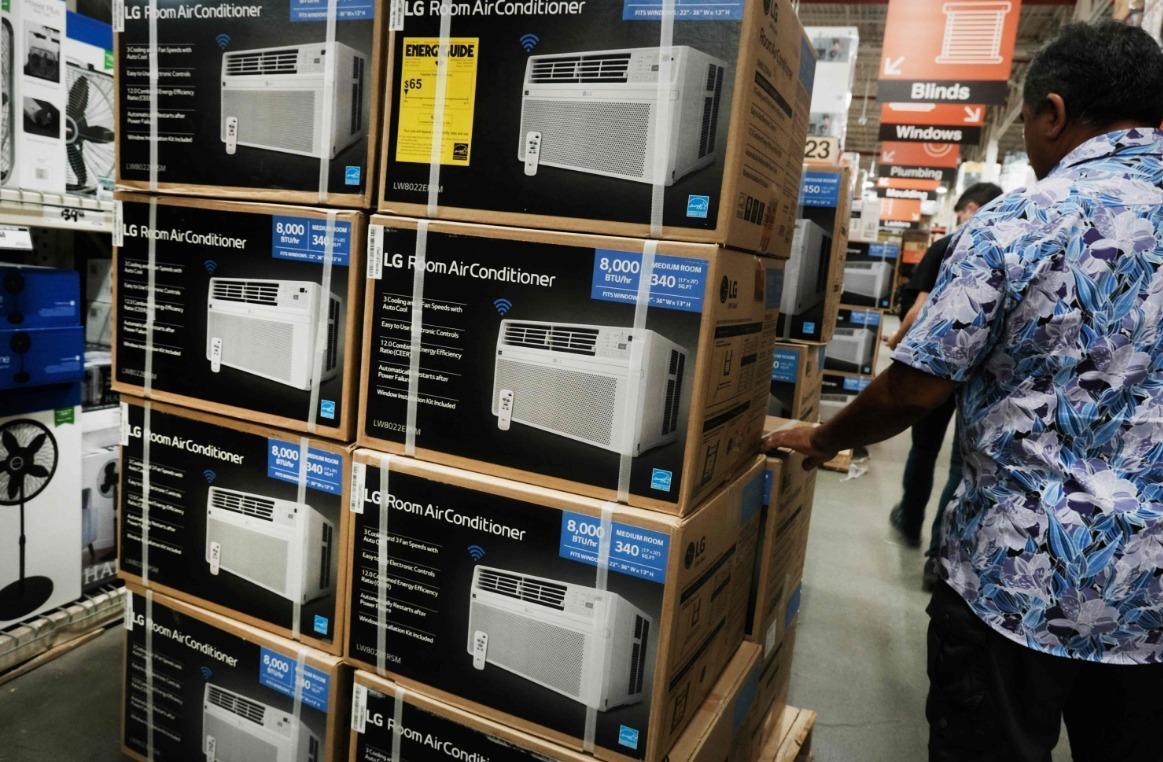Less power, lower emissions: Improving AC technology
NEW YORK

With air conditioner demand surging, scientists are looking for ways to improve the energy efficiency of cooling systems and limit damaging emissions that accelerate global warming.
Innovation is focused on three major fronts, with much of the attention on energy consumption. Air conditioning units account for 6 percent of electricity used in the United States.
Several breakthroughs have already cut power consumption by half since 1990, according to the U.S. Department of Energy.
The most impactful was the so-called "inverter" technology, which makes it possible to modulate the motor's speed instead of running it at 100 percent continuously.
Other new features include demand-controlled ventilation (DCV), which relies on sensors to determine the number of people in the building and adjust airflows.
Another major area is the search for substitutes to the refrigerant gases used in most of the nearly 2 billion installed AC units, according to the International Energy Agency.
For decades, air conditioners almost exclusively ran on chlorofluorocarbon (CFC) or hydrochlorofluorocarbon (HCFC) gases, which are thought to be up to 10,000 times as bad as CO2 in terms of global warming impact.
CFC and HCFC were banned under the Montreal Protocol, from 1987.
Then came hydrofluorocarbons (HFCs), which are now scheduled to be phased out by 2050.
Factories and commercial buildings already use other gases, such as ammonia, which has no greenhouse gas impact, as well as hydrocarbons, mainly propane, whose emissions are lower than methane.
"In some countries, you're starting to see hydrocarbon refrigerants," mostly propane, "being used, but there are restrictions around how much quantity you can put into the system" because such gas is flammable, said Ankit Kalanki, manager at the Rocky Mountain Institute.
Mandatory safety features make for a "level of sophistication" with "a price premium that gets added to the units itself," he added.
"And the residential air conditioning market tends to go towards the lowest first cost products, then the highest efficiency products."
Some are trying to go gasless, like Pascal Technology, a Cambridge, Massachusetts startup, that's working on a mechanism to keep refrigerants in a solid state, avoiding any discharge.
Other innovation is focused on products that bypass compression, an energy-intensive process in air conditioning that has changed little since its invention in 1902.
Separate groups of scientists at the National University of Singapore (NUS) and the Wyss Institute at Harvard University, respectively have built air conditioners that use water to cool the air.
The Wyss Institute has already made prototypes based on its cSNAP model, that operates on a quarter of the electricity used in the traditional compression process.
The device is partly built with ceramic panels, made in Spain.
Air conditioning innovation has been slower to address the third major issue related to conventional units, the discharge of hot air outside buildings.
One of the few available options are geothermal heat pumps, which employ a grid of buried pipes that channel cooler temperatures from underground, and do not release warm air.
















